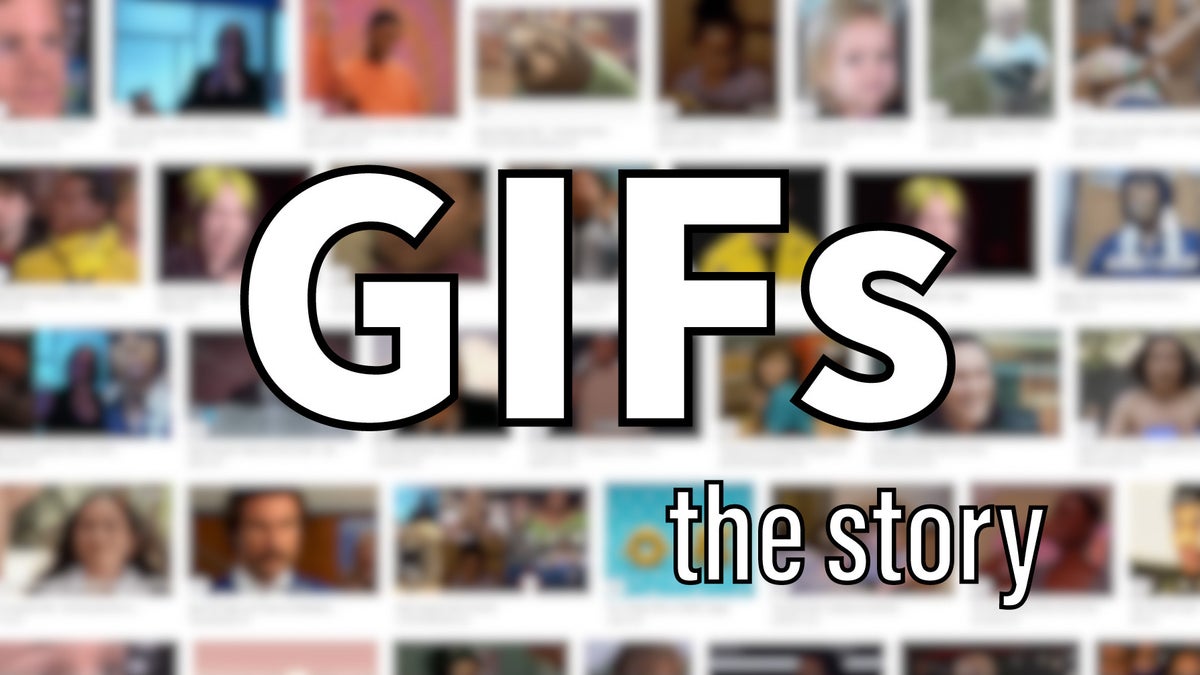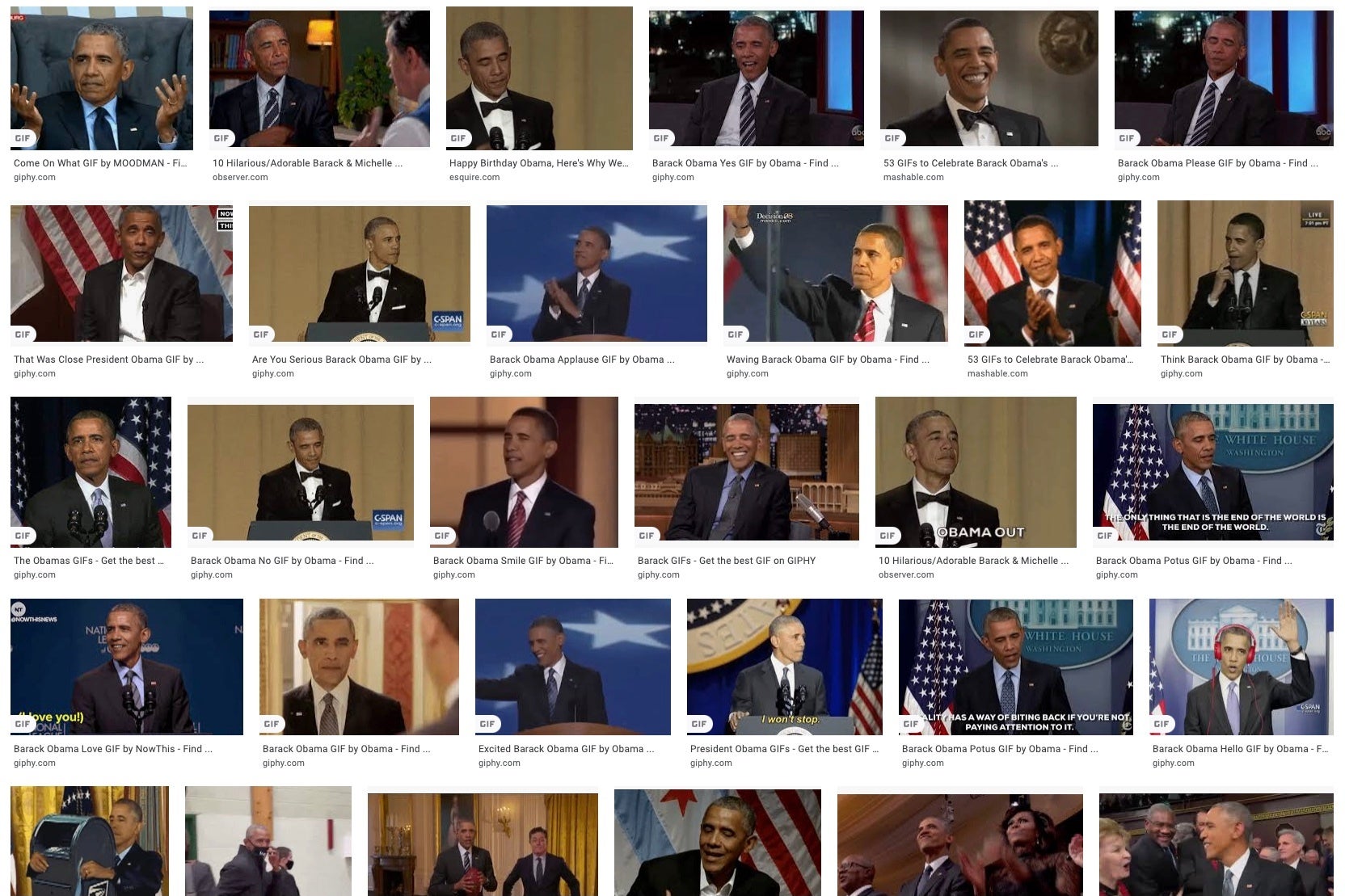GIFs: Why we use them & how they took over the world
This article may contain personal views and opinion from the author.

Origins: When, where, how

If you aren’t living under a rock, you’ll know what a GIF is. I’ll preface this by saying that we definitely don’t need to know the history of GIFs. They are just fun! That’s what everyone cares about.
Still, it is interesting to know why this ancient piece of media has taken over the world. Like many other early adaptations, this one was also born out of necessity more than anything else.
The company behind the GIF is CompuServe, one of the biggest online service providers in the USA, back in the 90s. Now the provider is part of Verizon, which is the least exciting part of its history.
CompuServe published the first GIF on June 15 1987 in order to introduce some color into the boring black-and-white file download area of CompuServe’s interface.
The person credited as the creator of what we know as a GIF is Steve Wilhite. He is an American computer engineer and the person to salute for the ‘blinking guy’, ‘THINK’ man, Kayode Ewumi, or the tired/upset baby girl, who’s become the go-to way of saying you are so done.
Terminology: Why a ‘GIF’

In fact, the original name of the file format was 87a (likely referencing the year of creation), but it was soon adjusted to… 89a! GIF, which stands for Graphics Interchange Format, came along when the engineers decided to take the first six bytes of the file and interpret it, using a ASCII character encoding standard. This resulted in… you guessed it - GIF (87a) & GIF (89a).
Pronunciation: How to say it

Here’s the thing: I’ve always pronounced it with a hard “g”, as in “give”. I never really questioned the pronunciation until everyone else on the internet started arguing about it. You’ll often see YouTube creators, and social media influencers weigh in with their own takes on the pronunciation.
The truth is, we should probably adhere to the way the inventor said it, and… apparently I was wrong. It is meant to be pronounced with a soft “g”, as in the peanut butter - ‘jif’! Some even claim that the famous spread was the actual motivator behind the name (or at least the way of saying it).
As reported by Daily Dot, this information comes directly from the inventor, Steve Wilhite, so it’s really hard to argue with. Moreover, the documentation for version 8.33 in the FAQ section of the CompuShow graphics display programme, states:
The GIF (Graphics Interchange Format), pronounced "JIF", was designed by CompuServe and the official specification released in June of 1987.
GIF was recognised as a noun and a verb almost 10 years ago. Therefore, we’d treat it as any other word, and words change all the time. Language is pretty fluid as a whole, so we definitely wouldn’t cancel people for a hard ‘g'. You do you, G...
Contemporary applications: What are GIFs for us
Frankly, this was the core reason I took on the quest of investigating the history of the GIF… the ‘fun’ bit of it. Their current form took off in 2007-2008, and they’ve been gaining momentum ever since.
I don’t know about you, but I use GIFs all the time. I often send them to my colleagues here at PhoneArena, and I am really not sure how they feel about that. I was rather surprised I got the green light to write on the topic!
Here’s a secret: The original idea behind this article was to look into whether GIFs should represent one’s physical features or not. I am the kind of person who’d send any GIF to anyone. I wouldn’t pick my GIFs according to gender, skin color, age, etc. Yes, I use GIFs with kids all the time, and they definitely don’t represent the way I look - that’s pretty clear. However, I’d argue GIFs are there to show how we feel. They are meant to transmit certain emotions, and kids are very good at that.
The 7% rule: GIF language

It is challenging to express yourself via a text message. Words can only say that much, especially when they aren’t even spoken.
Body language makes for a huge part of our daily communication. According to Dr Albert Mahrabian and his two studies on the topic, body language makes up over 90% of our communication. Of course, this is not representative of how all communication on Earth takes place all the time. However, it tells us that non-verbal communication (tone of voice and body language) is crucial for making yourself truly understood.
By the way, YES! I was also shocked to find out that tone of voice falls under the non-verbal communication bracket (the credit goes to Carol Gomam from Forbes). The more we know.
So, my verdict is that GIFs happen to be the happy medium between a video call and a text message, or even between a face-to-face interaction and a phone call, if you will. No wonder they are taking over the internet. Nowadays, everyone likes to text.
Voice messages from apps like WhatsApp and iMessage are changing that, but according to Statista & GSMA over 5 billion people globally still communicate via text messages. That’s roughly 65% of the world’s population, and that number goes up to 80% within the USA's borders, if you were curious.
Emojis: Meh
Relax! I haven’t forgotten them. This paragraph will be short because the article is dedicated to GIFs, but what I have to say is… They are cute… I mean… they work. But! GIFs are better! The feeling of stumbling upon that GIF, which truly conveys your mood or emotions, is just priceless (especially if it’s a funny one). GIFs eat emojis for breakfast, that’s what I’m trying to say. They are the real deal nowadays.
For the record, our chief editor doesn't agree with me, but I am fine with that, as long as I get paid. ($ emoji, $ emoji, $ emoji).
Moreover, I really think GIFs make texting more efficient. Sometimes, I’d chat with my 15-year-old cousin, and we’d communicate almost exclusively via GIFs. I’m not sure who’s more ‘childish’ and what’s the final takeaway, but take a look for yourself:

GIFs in pop culture: They are everywhere

You must have seen at least one popular person on a GIF. From artists and movie stars, all the way to unknown people who just did something deemed worthy of being GIFed. They’ve also been popularised by traditional media. Pretty much all hosts of TV shows have either mentioned them in a monologue, or in a show segment.
Even politicians aren’t left out of it. President Obama is one of my favorite GIFs. He’s quite expressive, in a peculiar way.
Also, everyone can be a GIF. You can turn yourself into a GIF right now. Giphy is the most popular app/website for this purpose, and it takes no time to stack a few pictures together or just repurpose your favorite video. In fact, some smartphones allow you to do it using their pre-installed software - the Galaxy Note series, for example.
So, go on... Have fun! Now that you know the ‘complicated history’ behind your favorite way of communication, you might have a different kind of appreciation for the art of GIFs!
Don’t forget to tell us what’s your most-used GIF!

I tried...
Follow us on Google News










![A new Android bug is making it impossible to install new apps. Are you affected? [UPDATE]](https://m-cdn.phonearena.com/images/article/176703-wide-two_350/A-new-Android-bug-is-making-it-impossible-to-install-new-apps.-Are-you-affected-UPDATE.webp)

Things that are NOT allowed:
To help keep our community safe and free from spam, we apply temporary limits to newly created accounts: